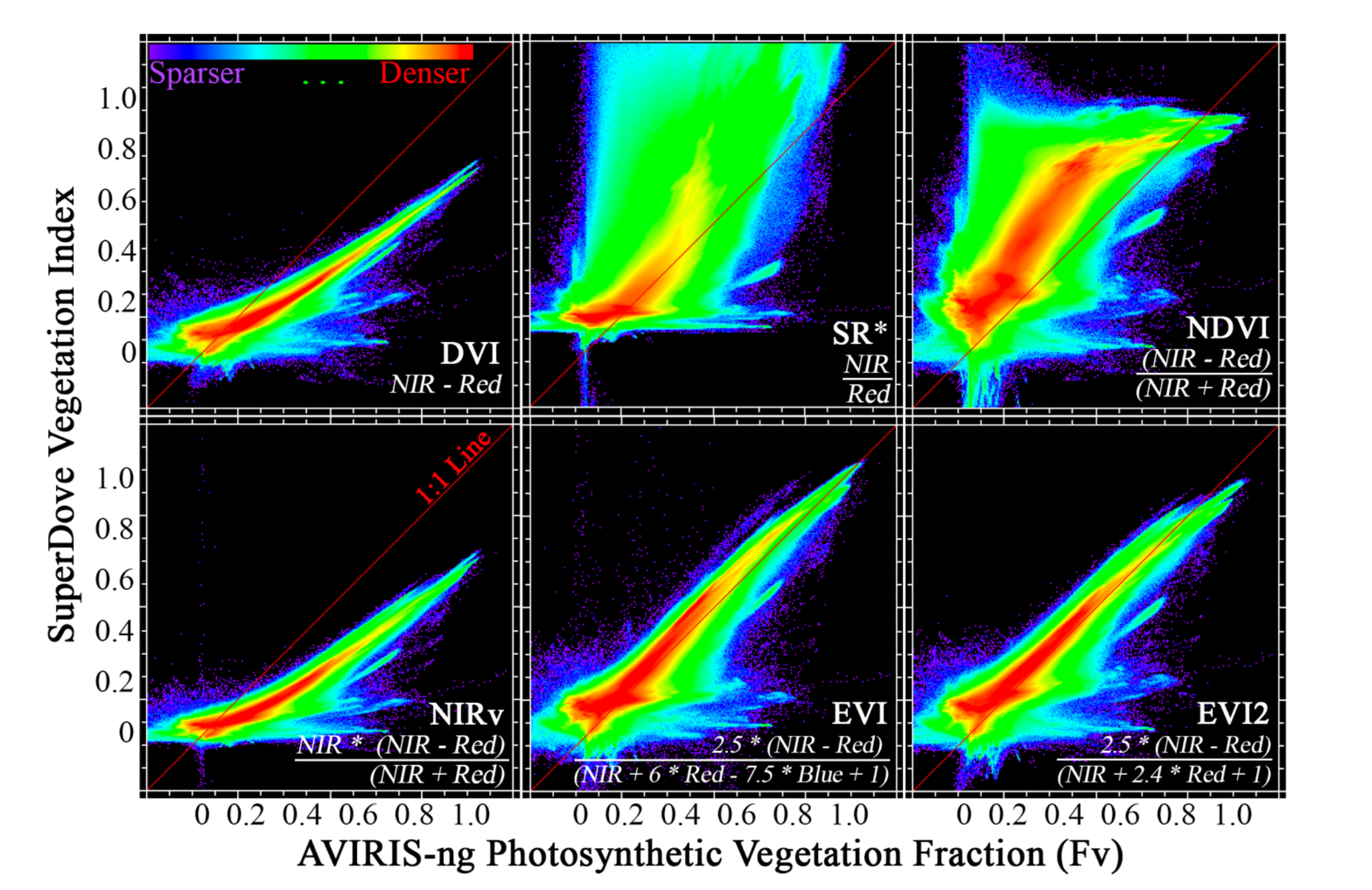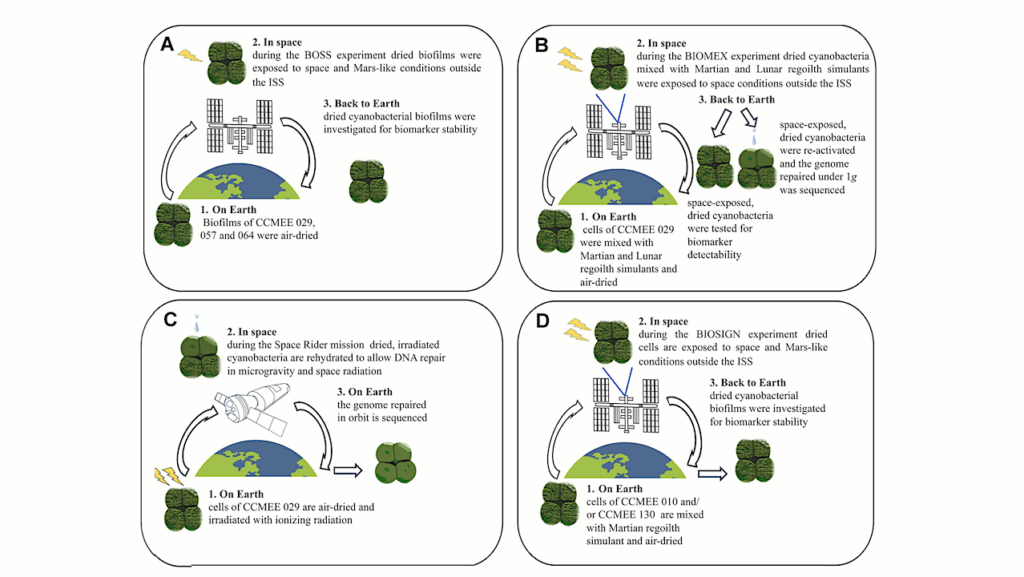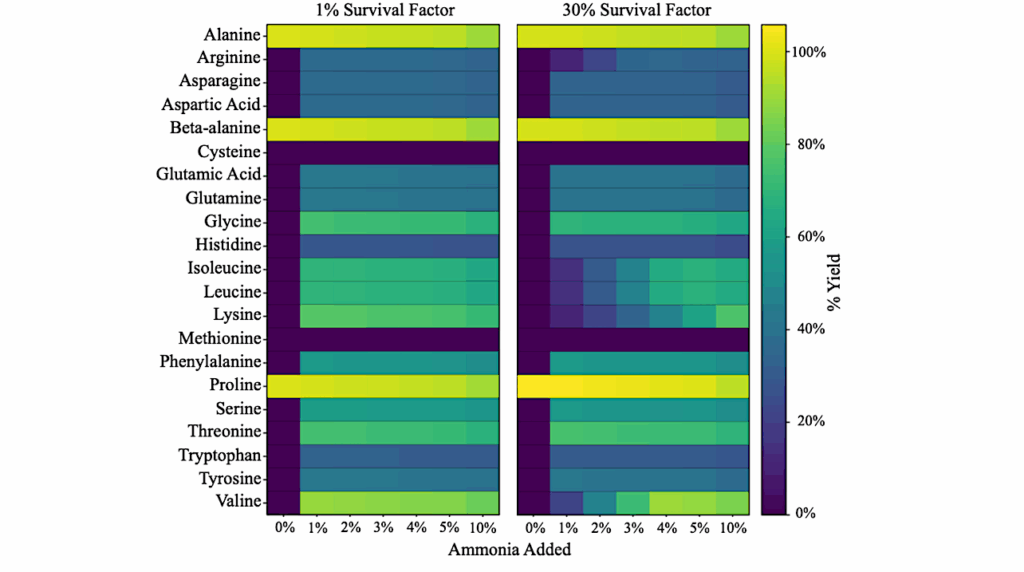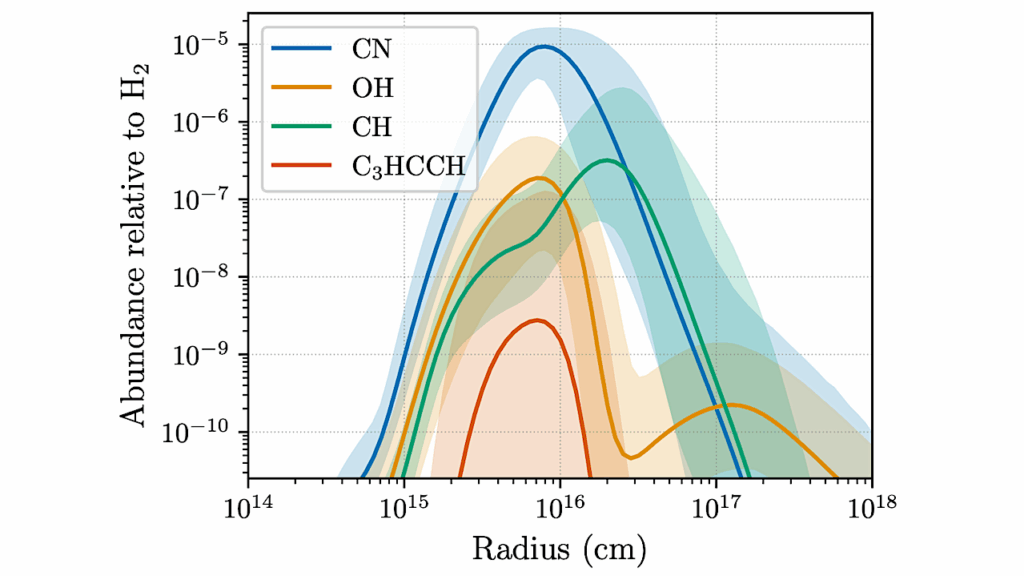Linking Common Multispectral Vegetation Indices to Hyperspectral Mixture Models

For decades, agronomists have used remote sensing to monitor key crop parameters like biomass, fractional cover, and plant health. Vegetation indices (VIs) are popular for this purpose, primarily leveraging the spectral red edge in multispectral imagery.
In contrast, spectral mixture models use the full reflectance spectrum to simultaneously estimate area fractions of multiple endmember materials present within a mixed pixel.
Here, we characterize the relationships between hyperspectral endmember fractions and 6 common multispectral VIs in crops & soils of California agriculture. Fractional area of green vegetation (Fv) was estimated directly from 64,000,000 5 nm, 3 to 5 m reflectance spectra compiled from a mosaic of 15 AVIRIS-ng flightlines. Simulated Planet SuperDove reflectance spectra were then derived from the AVIRIS-ng, and used to compute 6 popular VIs (NDVI, NIRv, EVI, EVI2, SR, DVI). Multispectral VIs were compared to hyperspectral Fv using parametric (Pearson correlation, r) and nonparametric (Mutual Information, MI) similarity metrics. 4 VIs (NIRv, DVI, EVI, EVI2) showed strong linear relationships to Fv (r > 0.94; MI > 1.2). NIRv & DVI showed strong interrelation (r > 0.99, MI > 2.4), but deviated significantly from 1:1 relative to Fv. EVI & EVI2 were also strongly interrelated (r > 0.99, MI > 2.3) and more closely followed a 1:1 relation with Fv.
In contrast, NDVI & SR showed weaker, nonlinear, heteroskedastic relation to Fv (r < 0.84, MI = 0.69). NDVI showed especially severe sensitivity to substrate background reflectance (-0.05 < NDVI < +0.6 for unvegetated spectra) and saturation (0.2 < Fv < 0.8 for NDVI = 0.7). These direct observational constraints on multispectral VI and hyperspectral mixture model comparability can serve as a quantitative benchmark for agronomic applications in the coming era of increasing spatial & spectral resolution Earth observation.
Linking Common Multispectral Vegetation Indices to Hyperspectral Mixture Models: Results from 5 nm, 3 m Airborne Imaging Spectroscopy in a Diverse Agricultural Landscape
Daniel Sousa, Christopher Small
Comments: 18 pages
Subjects: Geophysics (physics.geo-ph); Earth and Planetary Astrophysics (astro-ph.EP)
Cite as: arXiv:2208.06480 [physics.geo-ph] (or arXiv:2208.06480v1 [physics.geo-ph] for this version)
Submission history
From: Daniel Sousa
[v1] Fri, 12 Aug 2022 19:55:48 UTC (5,274 KB)
Full paper: https://arxiv.org/abs/2208.06480
Astrobiology,








